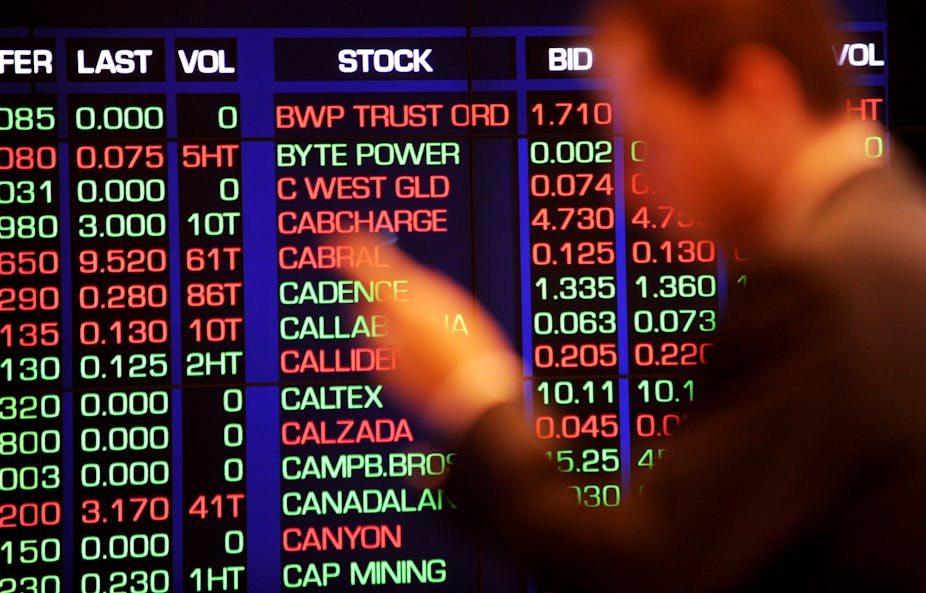The Minister for Financial Services and Superannuation recently announced new ASIC Market Integrity Rules to address the growth in automated trading and the changing nature of dark liquidity in equities markets.
These new rules appropriately balance the need for additional regulation to address the changes in the equities markets without succumbing to the unsubstantiated hysteria that has plagued the public debate on these issues in recent months.
New automated trading rules
The two most crucial elements of the new automated trading rules relate to extreme price movements and “kill switches”.
The extreme price movement rules, which take effect immediately, require ASX and Chi-X to impose a brief trading pause in the event of an extreme price movement. This pause is intended to allow investors to reconsider positions and allow algorithms to reset in response to large price changes.
A “kill switch” requires that brokers have direct and immediate control over algorithms which are sending orders to the market through their systems. The rules require that brokers prohibit the entry of orders to the market where they “have interfered with or are likely to interfere with the efficiency or integrity of the market”. These rules will not take effect until May 2014.
Most of the media discussion on these new rules has suggested that they are designed to curb the activities of high frequency traders. But in reality, their scope is much broader. The rules address the potential for anomalous orders from all types of trading algorithms, not just those used in high-frequency trading (HFT). HFT is a subset of algorithmic trading that is dependent on being able to enter and amend orders at very high speed.
New dark liquidity rules
There are two changes relating to dark liquidity. The first, and arguably most important change, is a new requirement for dark trades below block size to offer “economically meaningful price improvement”. This requirement means that investors trading in the dark must do so, at a better price than what is offered by the ASX and Chi-X. This requirement offers two important benefits:
(1) It rewards investors that display orders on the exchange by ensuring that other investors can not trade before them unless they are prepared to offer an economically superior price. This will encourage investors to place their orders on the exchange and should therefore increase liquidity in the exchange order book.
(2) It will reduce the fraction of activity that occurs in the dark, which should help to ensure the quality of the price discovery process.
The second change relates to block trades. Historically, block trades, which were defined as trades over $1 million could be executed at any price and without any pre-trade transparency. The new rules set three different block trade thresholds based on the liquidity of the stock. The thresholds range from $1 million down to $200,000. These changes will make it easier for institutions to trade blocks in smaller and less liquid stocks.
The price improvement requirement and the new block trade thresholds will take effect in May 2013.
ASIC also provided details about two internal taskforces that are in the process of investigating HFT and dark liquidity. The taskforces involve substantial fact-finding and data gathering, which has included formal requests for dark pool operators to produce information about their operations under the Corporations Act. These taskforces will assist ASIC to better understand the impact of HFT and dark liquidity in Australia on market quality and fairness. This will aid in the development of future Market Integrity Rules.
In addition, the Minister has announced that the Treasury will undertake a review of financial market licensing arrangements to determine whether there is a need for changes to this regime. In particular, it will determine whether or not dark pool operators should be licensed as markets. This will help to address the concerns of an unfair playing field expressed by some segments of the market.

